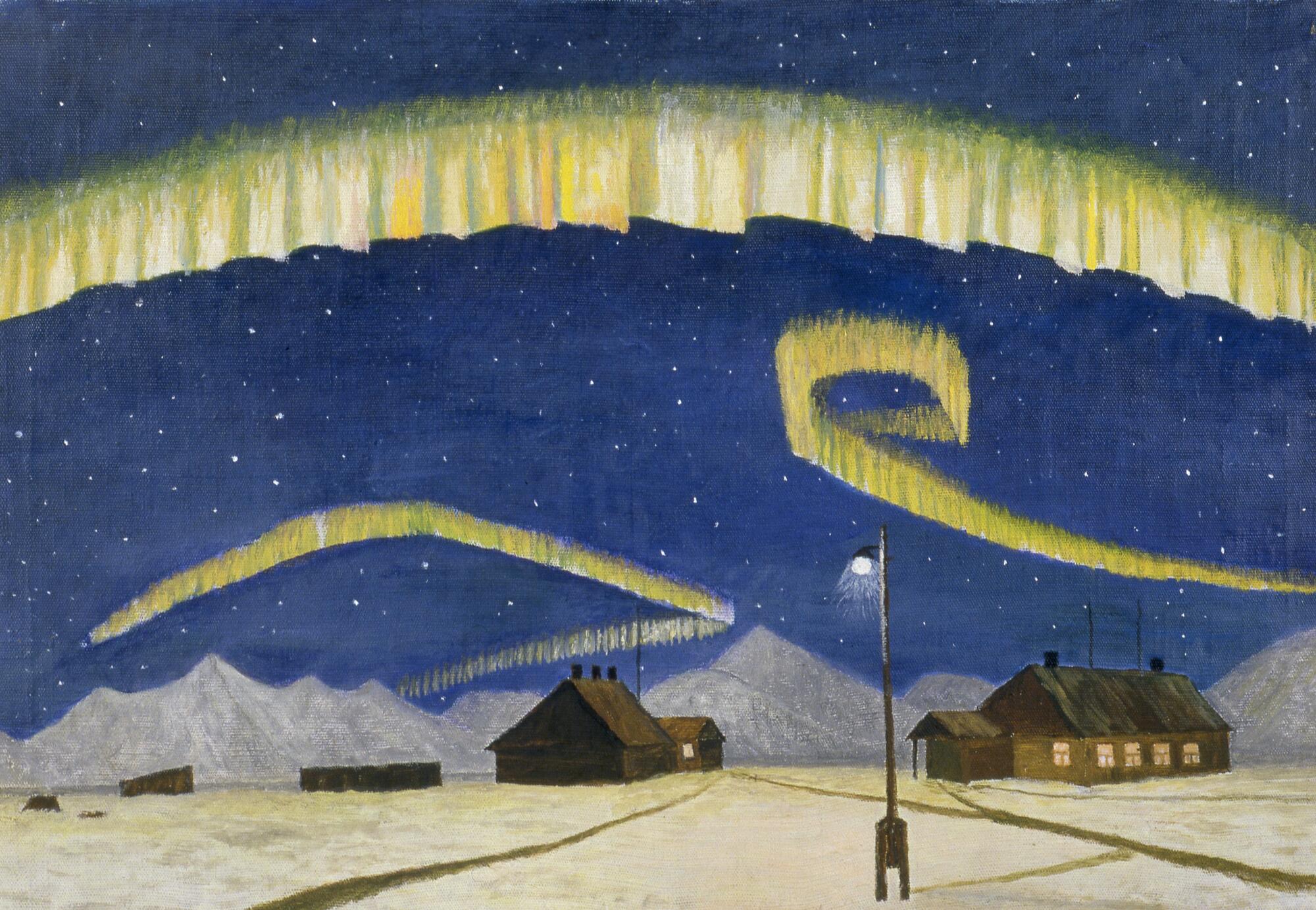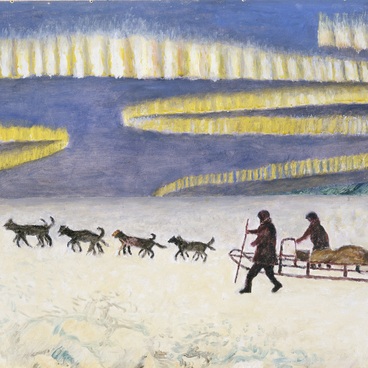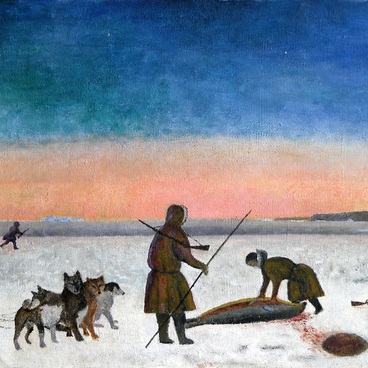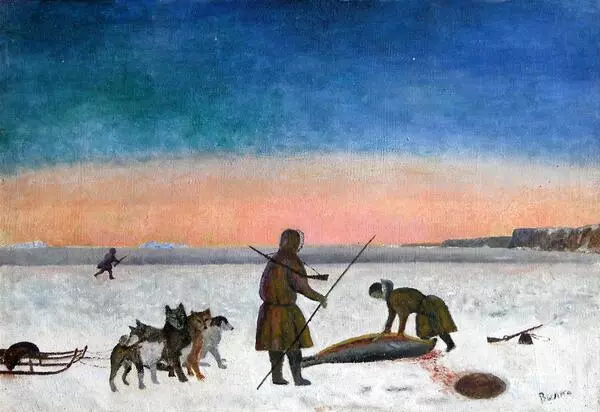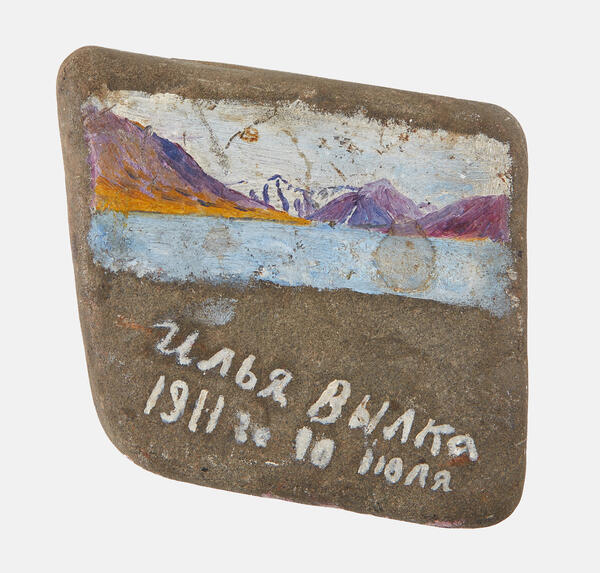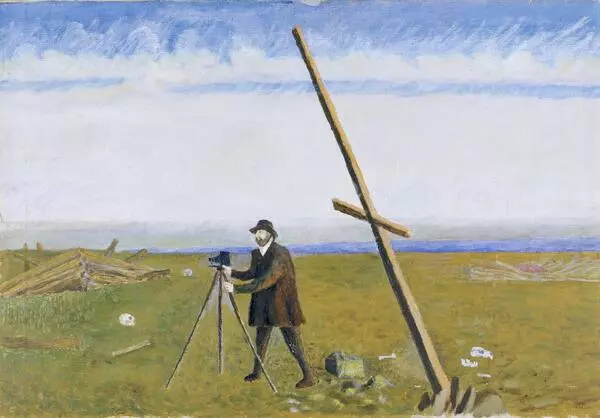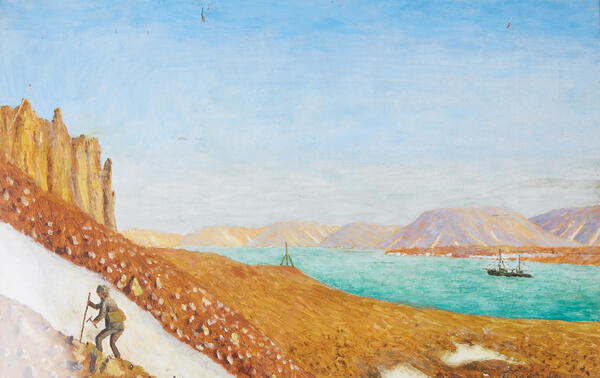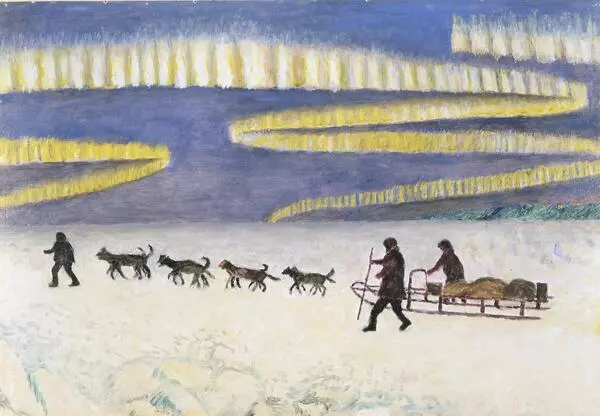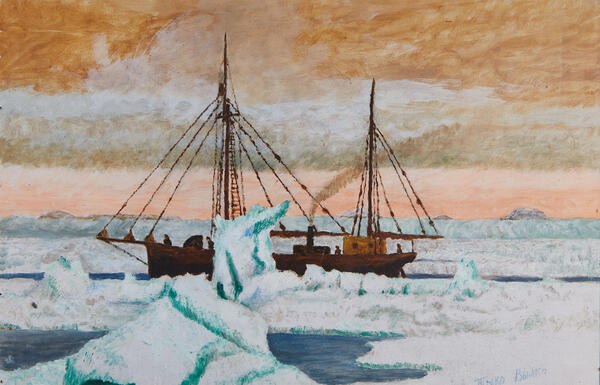Northern lights, or aurora, are a common motif for Tyko Vylka, a talented Nenets artist (see, for example, the paintings Sedov’s Final Journey and Borisov Disembarking the Mechta Boat). The beauty and the unearthliness of aurora are almost impossible to render. However, Vylka, who has witnessed this phenomenon many times, manages to show it in all its glory. In his paintings, aurora appears in the center of the sky like a magical colourful curtain moving in a cold dreamy wind.
There is a Nenets riddle about northern lights: “A painted curtain covers the sky, and it gets brighter in the tundra.” Aurora, or harp, as Nenets people use to call it, was considered a divine sign. When people tried to talk to Num, the god of light and kindness, during the Months of Small Darkness (November) and Big Darkness (December), the coldest and cruelest season of the year, most of the words got frozen without reaching him. But when forces of light, awakened by the Sun, came back to Earth, Num gave people a sign, letting them know they had been heard and he was going to help them and protect them: the frozen words started gleaming and glittering in the dark sky.
Nenets people believed that the cold is sent by the Northern Ox that lived in an ice sea near the Northern border of the sky. In the winter, its breathing appears as a flame (aurora), and in the summer, as rain clouds. When the ox is shedding, it snows; when the ox is blowing, a chill wind rises. When the ox is standing still, it is cold; when it starts moving, it gets warmer.
Vylka employs simple tools to render the grandeur and the solemnity of the moment. It is clearly seen in Northern Lights. Two sheathed houses, surrounded by narrow paths trodden in the snow, lay under a deep, bottomless blue of the star-scattered sky adorned with an iridescent crown of polar flashes. They gather in magic frills, the glittering ribbon swirling in dreamlike volutes. The snow mountains in the distance, ethereal and mesmerizing, add up to the general impression. The human world shares the joy of the moment: the window lights glow warmly, the street lamp flashes in time with the stars.
There is a Nenets riddle about northern lights: “A painted curtain covers the sky, and it gets brighter in the tundra.” Aurora, or harp, as Nenets people use to call it, was considered a divine sign. When people tried to talk to Num, the god of light and kindness, during the Months of Small Darkness (November) and Big Darkness (December), the coldest and cruelest season of the year, most of the words got frozen without reaching him. But when forces of light, awakened by the Sun, came back to Earth, Num gave people a sign, letting them know they had been heard and he was going to help them and protect them: the frozen words started gleaming and glittering in the dark sky.
Nenets people believed that the cold is sent by the Northern Ox that lived in an ice sea near the Northern border of the sky. In the winter, its breathing appears as a flame (aurora), and in the summer, as rain clouds. When the ox is shedding, it snows; when the ox is blowing, a chill wind rises. When the ox is standing still, it is cold; when it starts moving, it gets warmer.
Vylka employs simple tools to render the grandeur and the solemnity of the moment. It is clearly seen in Northern Lights. Two sheathed houses, surrounded by narrow paths trodden in the snow, lay under a deep, bottomless blue of the star-scattered sky adorned with an iridescent crown of polar flashes. They gather in magic frills, the glittering ribbon swirling in dreamlike volutes. The snow mountains in the distance, ethereal and mesmerizing, add up to the general impression. The human world shares the joy of the moment: the window lights glow warmly, the street lamp flashes in time with the stars.
